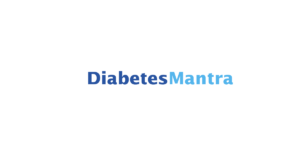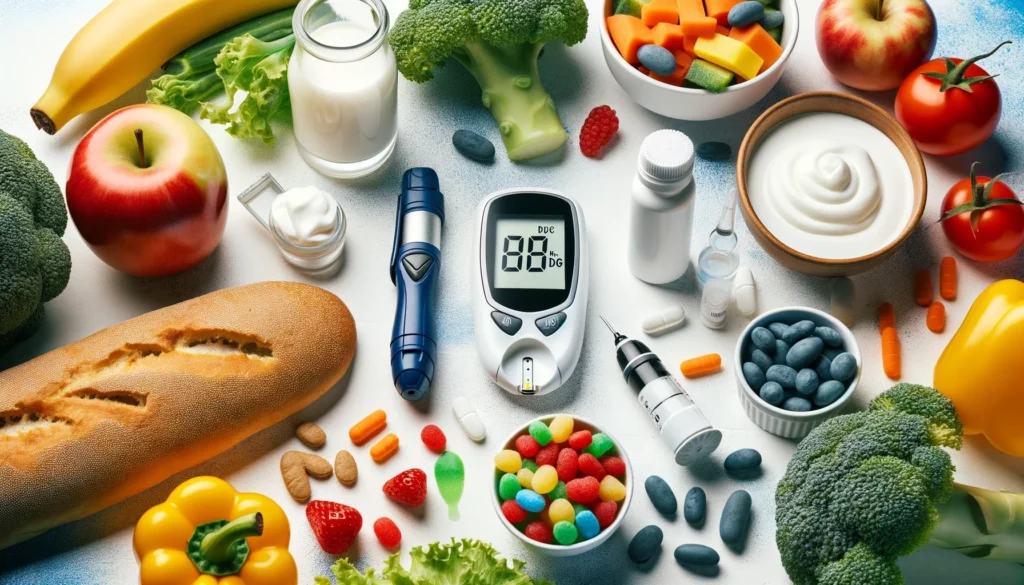Non-insulin-dependent diabetes mellitus (NIDDM), also known as type 2 diabetes, is a chronic condition affecting millions worldwide. It is characterized by insulin resistance and relative insulin deficiency, often influenced by genetic predisposition, lifestyle factors, and environmental triggers. While there is no cure for NIDDM, effective management strategies can significantly improve quality of life and reduce the risk of complications. This blog explores the comprehensive approach to NIDDM treatment, encompassing lifestyle modifications, medication, and other adjunct therapies.
Contents
What is NIDDM?

NIDDM stands for Non-Insulin Dependent Diabetes Mellitus, which is also commonly referred to as type 2 diabetes mellitus. It is a chronic metabolic disorder characterized by high blood sugar levels (hyperglycemia) resulting from the body’s inability to properly use insulin or inadequate insulin production.
In NIDDM, cells become resistant to the action of insulin, a hormone produced by the pancreas that helps regulate glucose (sugar) levels in the blood. This insulin resistance leads to an impaired ability of cells to take up glucose from the bloodstream, causing blood sugar levels to rise.
Several factors contribute to the development of NIDDM, including genetics, lifestyle factors such as poor diet and lack of exercise, obesity, and aging. While genetics can predispose individuals to NIDDM, lifestyle factors play a significant role in its onset and progression. Excess body weight, especially abdominal obesity, is a major risk factor for developing insulin resistance and NIDDM.
Types of NIDDM Treatment Methods
The treatment of NIDDM (Non-Insulin Dependent Diabetes Mellitus), also known as type 2 diabetes, typically involves a combination of lifestyle modifications, medications, and sometimes insulin therapy. Here are the main types of treatment methods for NIDDM:
Lifestyle Modifications

Diet plays a fundamental role in managing NIDDM.
- A balanced diet rich in fruits, vegetables, whole grains, and lean proteins helps regulate blood sugar levels and promotes overall health.
- Portion control and carbohydrate counting are important strategies to prevent blood sugar spikes.
- Additionally, focusing on foods with a low glycemic index can help stabilize blood sugar levels over time.
Individuals with NIDDM must work with a registered dietitian or certified diabetes educator to develop a personalized meal plan tailored to their dietary preferences, cultural background, and lifestyle.
Regular physical activity is another cornerstone of NIDDM management. Exercise improves insulin sensitivity, allowing cells to better utilize glucose for energy.
- Aerobic activities such as walking, cycling, and swimming are particularly beneficial for lowering blood sugar levels. Strength training exercises can also help build muscle mass, which aids in glucose metabolism.
- Individuals with NIDDM should aim for at least 150 minutes of moderate-intensity aerobic exercise per week, supplemented with muscle-strengthening activities on two or more days per week.
- Incorporating physical activity into daily routines, such as taking the stairs instead of the elevator or going for a brisk walk after meals, can help maintain consistent exercise habits.
Weight management is a key component of NIDDM treatment, as excess body weight exacerbates insulin resistance and increases the risk of complications. Even modest weight loss can significantly improve glycemic control and reduce the need for medication.
- Sustainable weight loss strategies include adopting a calorie-controlled diet, increasing physical activity, and practicing behavior modification techniques such as mindful eating and self-monitoring.
- Setting realistic goals and tracking progress can help individuals stay motivated and make long-term changes to their lifestyles.
- Moreover, maintaining a healthy weight not only improves blood sugar control but also lowers the risk of cardiovascular disease and other obesity-related conditions.
Oral Antidiabetic Drugs
Metformin, the first-line medication for NIDDM, works by reducing glucose production in the liver and improving insulin sensitivity in peripheral tissues. It is generally well-tolerated and has a low risk of hypoglycemia, making it suitable for most individuals with NIDDM.
- However, side effects such as gastrointestinal upset may occur, particularly when starting the medication or increasing the dosage. Sulfonylureas stimulate insulin secretion from the pancreas, effectively lowering blood sugar levels
- They are often used as add-on therapy when metformin alone is insufficient for achieving glycemic control. Common side effects include weight gain and hypoglycemia, especially in older adults and those with impaired kidney function.
DPP-4 inhibitors are oral medications that help regulate blood sugar levels by increasing insulin secretion and reducing glucagon production. They are generally well-tolerated and have a low risk of hypoglycemia. However, they may be less effective in individuals with advanced NIDDM or severe insulin resistance.
- SGLT-2 inhibitors work by promoting the excretion of glucose in the urine, thereby lowering blood sugar levels and reducing the risk of cardiovascular events.
- These medications are particularly beneficial for individuals with heart failure or chronic kidney disease, as they have been shown to improve cardiovascular outcomes and delay the progression of kidney disease.
TZDs (Thiazolidinediones) improve insulin sensitivity in muscle and adipose tissue and reduce glucose production in the liver. They are often used as second-line therapy for NIDDM, either alone or in combination with other oral antidiabetic drugs. However, TZDs are associated with an increased risk of weight gain, fluid retention, and heart failure, so they should be used with caution, especially in individuals with a history of cardiovascular disease or edema.
Injectable Therapies

Insulin therapy is necessary for some individuals with NIDDM to achieve optimal blood sugar control. Insulin can be administered via injections using a syringe, pen device, or insulin pump. Different types of insulin are available, including rapid-acting, short-acting, intermediate-acting, and long-acting formulations.
The choice of insulin regimen depends on factors such as individual preferences, lifestyle, and blood sugar patterns. Insulin therapy requires careful monitoring of blood sugar levels and adjustments to insulin doses based on factors such as diet, exercise, illness, and stress.
GLP-1 receptor agonists are injectable medications that stimulate insulin secretion, suppress glucagon release, and promote satiety, leading to improved glycemic control and weight loss. These medications are typically used as add-on therapy for individuals with inadequate blood sugar control despite taking oral antidiabetic drugs.
GLP-1 receptor agonists are administered via subcutaneous injection once or twice daily, depending on the specific formulation. They have been shown to reduce the risk of cardiovascular events in individuals with NIDDM and established cardiovascular disease. Common side effects include nausea, vomiting, and diarrhea, which may improve over time with continued use.
Blood Sugar Monitoring
Regular monitoring of blood sugar levels is essential for managing NIDDM and adjusting treatment as needed. Self-monitoring of blood glucose (SMBG) allows individuals to track their blood sugar levels at home using a blood glucose meter. The frequency of SMBG depends on factors such as treatment regimen, level of glycemic control, and individual preferences.
Continuous glucose monitoring (CGM) systems provide real-time glucose readings throughout the day and night, allowing for more comprehensive monitoring of blood sugar levels. CGM systems consist of a sensor that is inserted under the skin to measure glucose levels in the interstitial fluid and a transmitter that sends the data to a receiver or smartphone app for analysis.
Individuals with NIDDM need to work closely with their healthcare team to develop a personalized treatment plan that addresses their specific needs and goals. Regular medical monitoring and adjustments to treatment may be necessary to achieve and maintain optimal blood sugar control and prevent complications associated with NIDDM.
Which NIDDM Treatment Method To Choose?
Choosing the most suitable NIDDM (Non-Insulin Dependent Diabetes Mellitus) treatment method involves considering several factors that can influence treatment outcomes and individual preferences. Here are some key factors affecting the selection of NIDDM treatment:
Disease Severity and Progression:
- Individuals with mild NIDDM may initially respond well to lifestyle modifications such as diet and exercise.
- As the disease progresses or if initial lifestyle changes are insufficient, oral antidiabetic drugs may be prescribed.
- Injectable therapies such as insulin or GLP-1 receptor agonists are typically reserved for individuals with moderate to severe NIDDM or those who fail to achieve adequate glycemic control with oral medications.
Individual Health Status:
- The presence of comorbidities such as cardiovascular disease, chronic kidney disease, or liver disease may influence treatment selection.
- Renal function is an important consideration when prescribing certain medications, as some drugs may require dose adjustments or may not be suitable for individuals with impaired kidney function.
Treatment Goals:
- Treatment goals should be tailored to individual needs, taking into account factors such as age, life expectancy, and risk of complications.
- The primary treatment goal for NIDDM is to achieve and maintain optimal glycemic control while minimizing the risk of hypoglycemia and other adverse effects.
Adverse Effects and Tolerability:
- The potential for adverse effects and tolerability of medications should be considered when selecting treatment options.
- Some individuals may experience gastrointestinal side effects with certain oral antidiabetic drugs, while others may be at risk of hypoglycemia or weight gain with insulin therapy.
Patient Preferences and Lifestyle:
- Patient preferences, lifestyle factors, and treatment adherence play a significant role in determining the most appropriate treatment method.
- Some individuals may prefer oral medications over injectable therapies due to convenience, while others may prioritize weight loss or avoidance of hypoglycemia.
Sources To Get NIDDM Treatment

Here are some reputable websites where individuals can find information and resources related to NIDDM treatment:
- American Diabetes Association (ADA): The ADA is a leading organization dedicated to diabetes advocacy, research, and education. Their website offers a wealth of information on NIDDM treatment, including guidelines, lifestyle recommendations, medication options, and support services. Additionally, the ADA provides resources for healthcare professionals, caregivers, and individuals with diabetes.
- Diabetes Mantra: The Diabetes Mantra website features comprehensive information on diabetes, including prevention, management, and treatment. Visitors can access educational materials, interactive tools, and data on diabetes prevalence and risk factors. The CDC also offers resources for healthcare providers and public health professionals.
- Mayo Clinic: The Mayo Clinic’s website provides authoritative information on various medical conditions, including NIDDM. Visitors can find detailed articles on diabetes management, lifestyle recommendations, treatment options, and self-care tips. The website also offers insights from healthcare professionals, patient stories, and resources for staying informed about diabetes-related news and research.
Conclusion
NIDDM treatment is multifaceted, involving a combination of lifestyle modifications, medication, and adjunct therapies. By adopting a comprehensive approach that addresses glycemic control, weight management, and overall health, individuals with NIDDM can effectively manage their condition, minimize complications, and lead fulfilling lives. Regular monitoring, ongoing education, and collaboration with healthcare providers are essential components of successful NIDDM management.
Do you want to get rid of diabetes? Join our online diabetes treatment program and reverse Diabetes naturally through lifestyle changes such as a Personalized Diet plan, Exercise, Yoga, dieticians, and health coaches.

